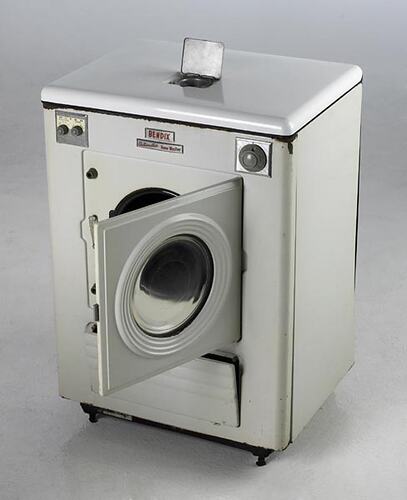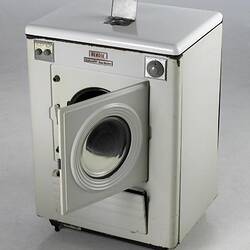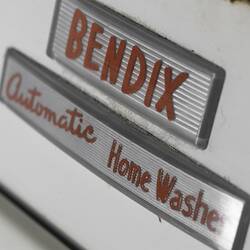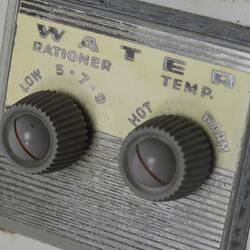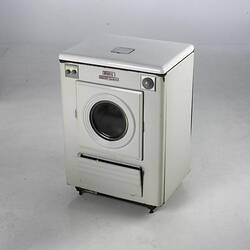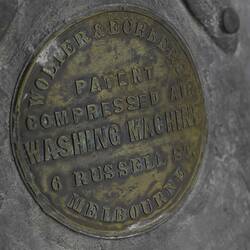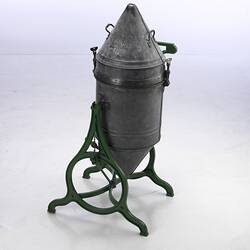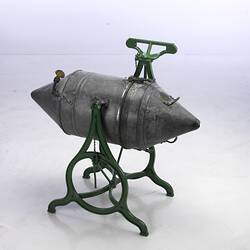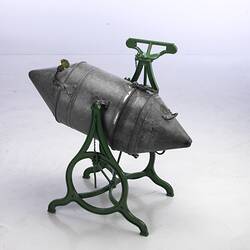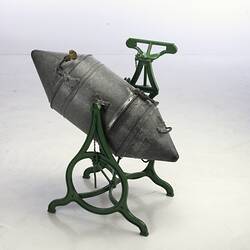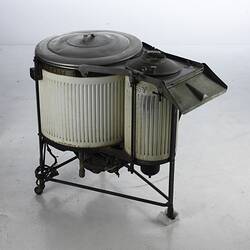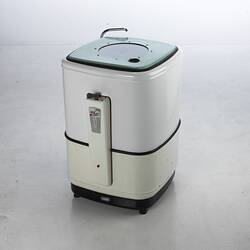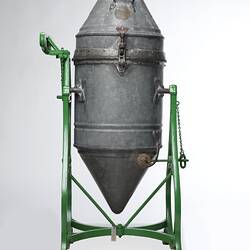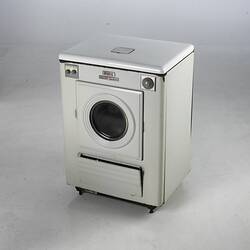The museum's diverse collection of over 20 washing machines dates from the late 19th through to the late 20th century, and reflects a wide range of technological, social and environmental influences.
The distinctive, rocket-like Wolter & Echberg was designed and made in Australia in the late 19th century. Made of galvanised steel, its simple but innovative design used minimal water, but housewives still required a strong arm to swing it back and forth on wash day.
The 1912 patented electric Syracuse 'Easy' featured vacuum-cup technology, which helped force soapy water through clothes. The very name of this US-made twin tub machine reinforced the alluring, but not entirely true, promise from advertisers that electrical appliances would be labour saving.
The 1950s Thor 'Automagic' exploited the space-saving but novel idea of washing clothes and dishes in the same machine. Although innovative, this Australian-made machine still followed the 'white enamel box' form that had become almost standard for domestic appliances by the 1940s.
The potential to use less water was a key factor of the 1950s Bendix 'Automatic Home Washer', as suggested by its 'water rationer' dial. Designed in the United Kingdom, this front-loading machine was an early example of concern for water and energy use, and the push for more environmentally efficient appliances.
This collection provides insights into significant historical issues including domestic work, gender roles, design, manufacturing, consumer culture and sustainability.
More Information
-
Keywords
-
Authors
-
Article types
